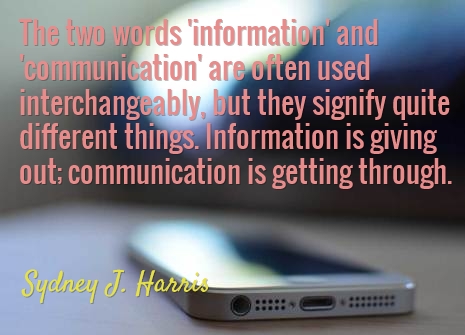I got an email like this* the other day which just cracked me up:
To: Helen Brown
From: XYZ Company
Subject: The Master List of DNS Terminology
Helen,
XYZ Company is passionate about internet performance, particularly when it comes to DNS. We realize that DNS, ISC and BIND can be difficult to understand when the terminology is unfamiliar. It’s easier to get the most cost efficiencies from your DNS provider and services if you know the basics. That’s why we’ve created “DNS, ISC and YOU.” This essential e-Book lists the need-to-know terms that you’ll frequently hear when DNS is discussed. Download now and start saving your company money!
Best regards,
The XYZ Company Team
Ummm, yeah.
So here’s this company, trying to convince me about how good they are at helping people find clarity, and their one shot at grabbing me is an email chock full of acronyms and techie terms. Even their company name was an acronym!
As I hit the delete key, I started thinking about the ways we communicate. And then I thought, “Uh Oh.”
WE ARE ALL GUILTY OF NOT COMMUNICATING CLEARLY
As fundraisers, we may understand what LYBUNT means, or what “gift planning” or “special gifts” are, but consider this: through the eyes of a donor, what kind of message does it send them if the Director of Special Gifts doesn’t come see them? Is their gift not …special …enough to us?
As prospect researchers, we may know what the SEC is or what SIC codes are, but imagine your reader is a brand new frontline fundraiser (or maybe even an experienced one!) – that person may have no idea that you are talking about. And maybe they don’t want you to think that they don’t know. So the information you’re sharing with them to help them do their job better – isn’t.
What we say – and how we say it – matters.
CLARITY IS IMPORTANT
Regardless if we are communicating with donors or creating internal information, don’t we want to be sure we are all on the same page? In the long run, isn’t it just more efficient to be clear?
With that in mind, here are three tips to help you get through to your readers:
- Put yourself in your reader’s shoes. Are they a bullet-points kind of person? Do they want all of the salient details on the first page? Give them what they want. You’re not writing for yourself, for posterity or to get a good grade – you’re writing to communicate valuable information for the purpose of motivating them to action.
- Don’t allow people to feel dumb. If your reader doesn’t understand what something means, they’ll skip right over it. Do you really want a donor to skip over an important passage in their planned gift proposal? Or a fundraiser to pass over the fact that the prospect you just researched for the last two days has over $2 million in stock options what will mature next year? If they don’t understand, it’s your job to make sure they do.
- The first time you use a jargon term or acronym, spell it out. If you were talking with your mom and used a phrase or acronym from your office life (like screening, principal gift, D&B), would she understand what you meant? If not, spell it out the first time you use it. Even though Mr. Long-time Fundraiser was the one who requested the report and knows what a CRT is, know that it may end up in front of someone else’s eyes entirely.
Which brings me to the Death Trap part of this
If a report (or proposal) is too full of gobbledygook, it’s just not going to get read. It might even get tossed aside “for later.” (Read: never). Or given to someone else to read and deal with.
And since you can never be sure where internal documents are going to end up, it’s important that each page prominently contains the word CONFIDENTIAL. Remind readers in the document’s footer to shred confidential materials after use.
Trust me, you don’t want the next time you see that information to be on the front page of the newspaper.
*slightly edited to protect the guilty and prove a point

